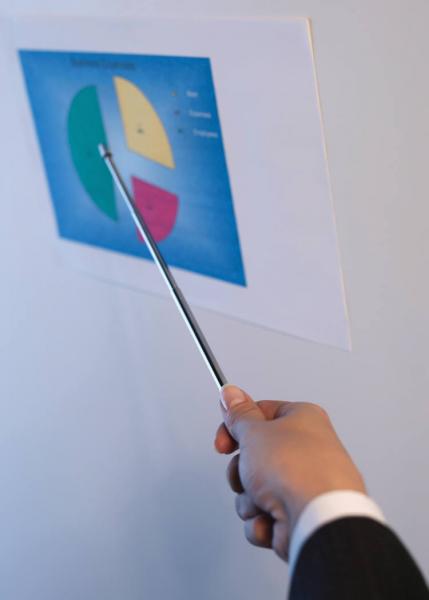
by Ralph Allora
PowerPoint. The very word evokes fear and loathing in business audiences everywhere. The reaction of a typical prospect, upon learning that he or she will be subjected to your PowerPoint sales presentation, is that it’s 45 minutes of her life she’ll never get back.
But it doesn’t have to be that way. Avoid these seven common mistakes, and people will gladly let you hook up your laptop to their projector.
1. Reading the bullet points verbatim.
When an audience is staring at a bunch of words on a screen while listening to you mechanically recite those exact words, they eventually sink into a hypnotic state, and walk away remembering not a thing you said. Think of a PowerPoint presentation not as karaoke, in which you sing from lyrics on screen, but as improv: using simple, concise bullets as a starting point for a slightly more detailed verbal riff. For example, “Performance boost of 25%” could be spoken as, “Here’s where our customers really see the benefits of our service — they’re getting a 25 percent jump in real-time performance.”
2. Trying to be funny for funny’s sake.
I’ve seen many PowerPoint presentations in which the speaker has thrown in — completely out of context — a New Yorker cartoon or other humorous non sequitur, in a desperate attempt to keep people awake. A word of advice regarding this tactic: Don’t. Unless the cartoon or humorous photo offers a strong, relevant reinforcement of a particular point, you’ll do better to keep your audience’s attention with good design and content, a brisk pace, and an engaging speaking tone.
3. Going off the deep end with animation.
Another classic yet misguided attempt to liven things up. I’ve seen presentations in which a particular screen starts off practically blank, and with every third spoken word, the speaker clicks to “build” an absurdly complex animation sequence: Text boxes fly in from the left and right; bullet points drop like anvils from the sky; photos spin into the frame like helicopters. Animation can be effective, but keep the effects subtle. And limit your build sequence to two or three parts — if it’s more complex than that, you’re trying to communicate too much information.
4. Trying to tell your company’s entire story.
If you were on a first date, would you present your in-depth autobiography, from preschool to the present? No, you’d reveal just enough to make your date interested in seeing you again. Same principle with PowerPoint. A “kitchen sink” presentation that tosses in minutia about your process, every piece of market research you’ve ever done, detailed bios of every staffer, and the like, will send your audience scurrying for the exits. Your goal should be to move the discussion to the next level. Leave them either wanting to learn more, or to close the deal, depending on where you are in the sales process.
5. Two words: Bar charts.
“And this next chart represents our quarter-over-quarter gro— zzzzzz.” In and of themselves, bar charts are deadly. While PowerPoint has added some more visually appealing chart templates in recent years, a bar graph is still about as exciting as crop rotation. So customize it a bit. If your company makes industrial gears, for example, do a pictorial representation of your production volume: each gear icon represents, say, 1,000 gears produced. Sure, it takes more time and effort than simply using an off-the-rack chart template, but if it helps an audience remember your point, it’s worth it.
6. Two more words: Pie charts.
What goes for bar charts goes twice for pie charts. If your pie chart doesn’t include even a small nod to the growing popularity of infographics — by, say, using differently colored icons to represent percentages of a whole — you risk inducing sleepy time. (On a related note, I’ve seen more than one presenter try to inject some humor by turning a photo or illustration of an actual pie — as in, blueberry or pizza — into a pie chart. Just… no.)
7. Not knowing how to end it.
Even if you’ve just delivered a powerful presentation with compelling copy and visuals, a clear set of features and benefits, and vivid case studies, you can throw it all out the window if you end it abruptly or with no call to action. (I’ve seen PowerPoint presentations that actually end with the words “The End.”) Briefly sum up the main points, and politely ask your audience to do something.
So, now that you’ve learned what not to do in PowerPoint — from reciting bullet points to using boring charts — I encourage you to use this knowledge in putting together the most engaging and effective presentation you’ve ever delivered. (See what I did there?)
Ralph Allora is co-founder and marketing director of TRAY Creative, a Seattle-based creative agency specializing in brand identity, marketing campaigns and web solutions for forward-looking companies and nonprofits.
